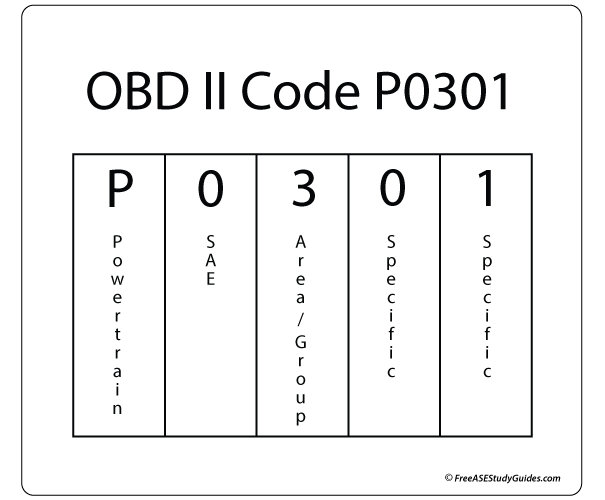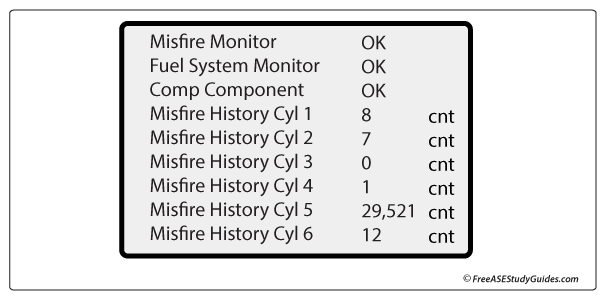OBD II System Codes

The OBDII system monitors different areas of the vehicle. If a problem or conflict is detected, the system illuminates the MIL and sets a code in the ECM's memory. An OBDII code is an alphanumeric code containing a letter as its first digit, followed by a series of numbers. Let's have a closer look at the meaning of these digits.
1. The first digit uses an acronym to indicate the code's origin.
- P indicates the powertrain.
- B indicates the body.
- C indicates the chassis.
- U indicates the network.
2. The second digit (0) indicates whether this is a generic (SAE) code or (1-2) for a manufacturer-specific OEM-enhanced code.
3. The third digit indicates the area of the vehicle at fault. For example, a 3 indicates an ignition system misfire; a 7 indicates a transmission problem. There are several.
4. Both the fourth and fifth digits (01) indicate the specific area. For example, the code in the illustration indicates a misfire with the (01) #1 cylinder. A P0300 designates a random misfire. P0302 indicates a problem with the number two cylinder.
OBD II Misfire Monitor

The OBD II misfire detection monitor notifies the driver if a misfire is causing an engine to release excessive pollutants into the atmosphere. When levels exceed 1.5 times emission standards (Type B), the ECM illuminates the check engine light. When a misfire is bad enough to damage the catalytic converter (Type A), the check engine light will flash, notifying the driver of potential damage.
Many manufacturers have monitors that use the crankshaft position sensor to monitor for misfires. When a misfire occurs, the crankshaft slows and speeds up when the next cylinder fires. The monitor registers this change in crankshaft speed as a misfire.

Modern vehicles have an ion sensor that senses resistance across the sparkplug gap. It produces a small voltage signal that changes as it passes through the inert gases and hydrocarbons in the cylinder. Inert gas caused by good combustion has more resistance than leftover unburned hydrocarbons caused by a misfire, ping, and engine knock.